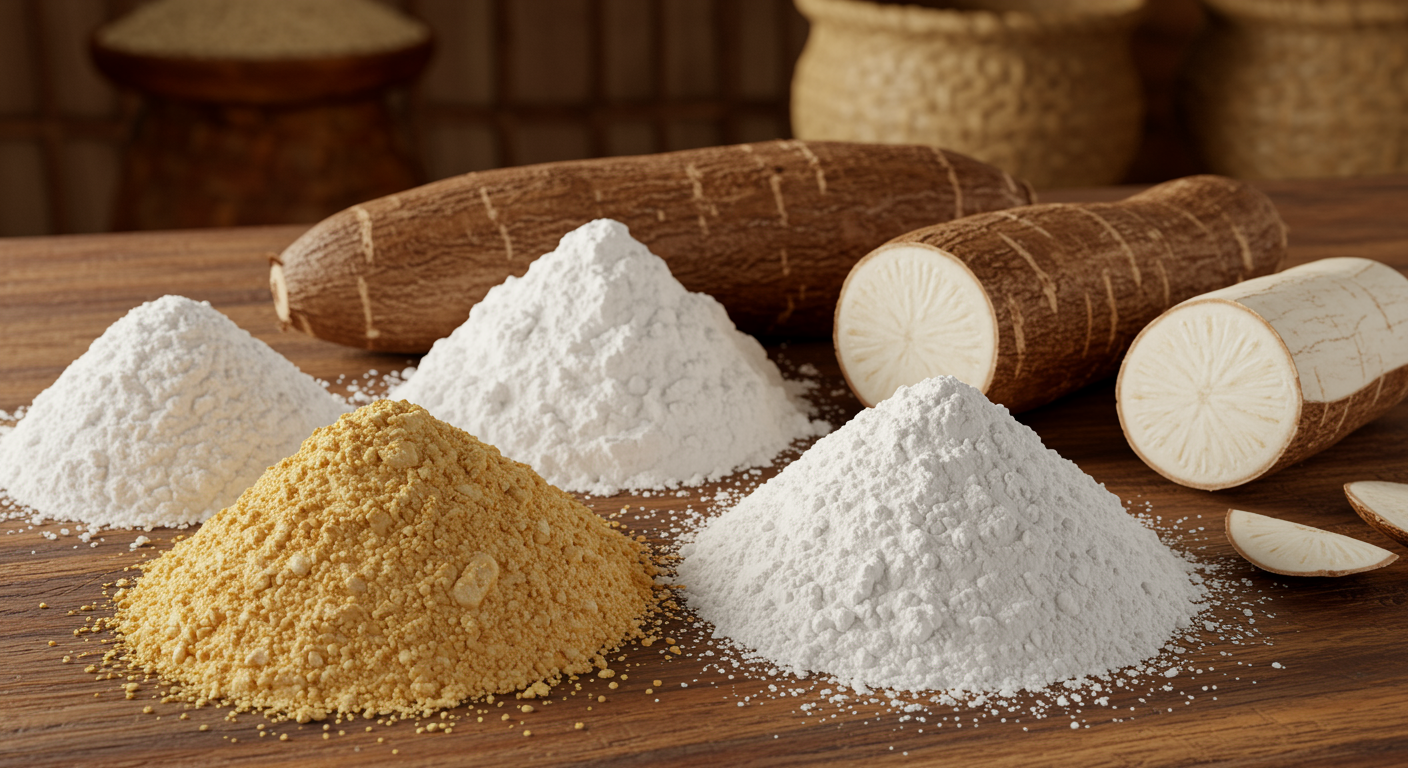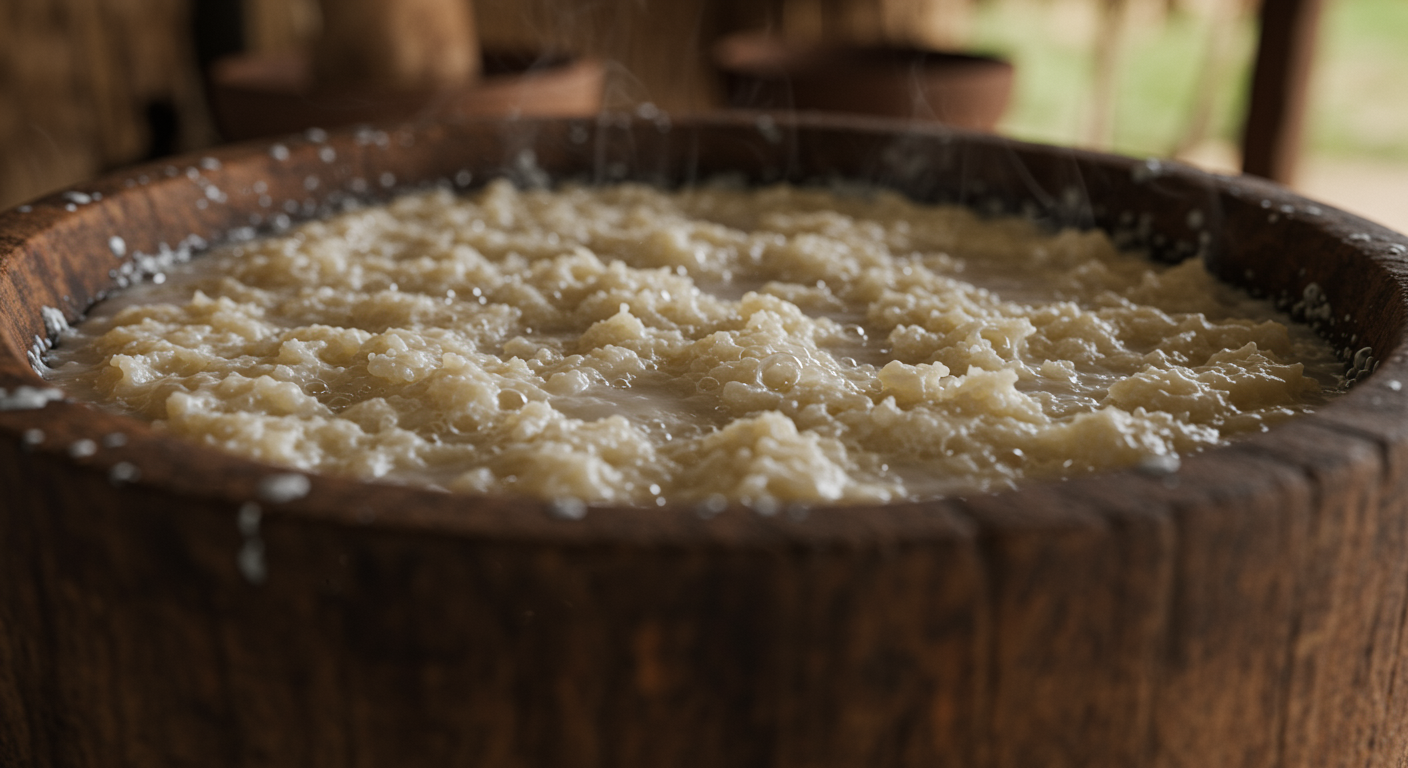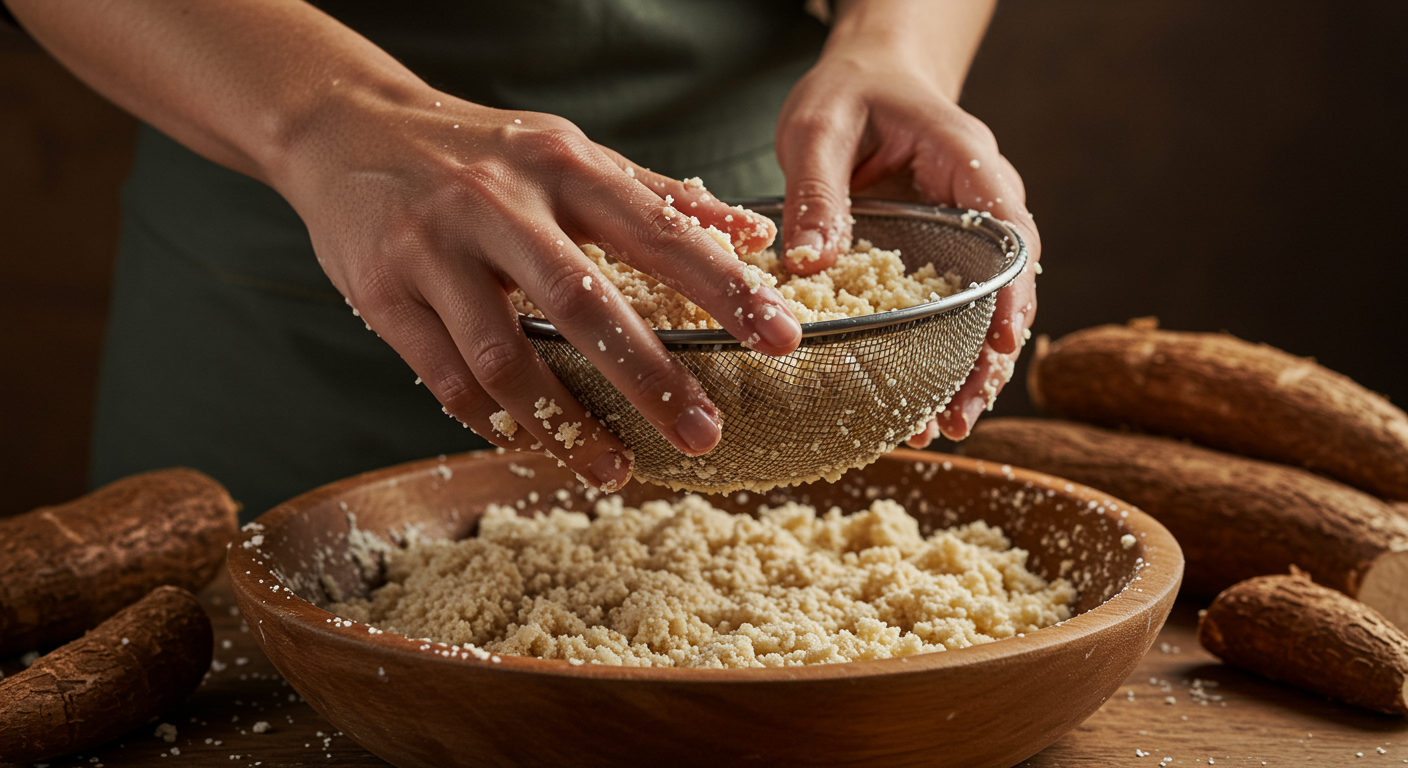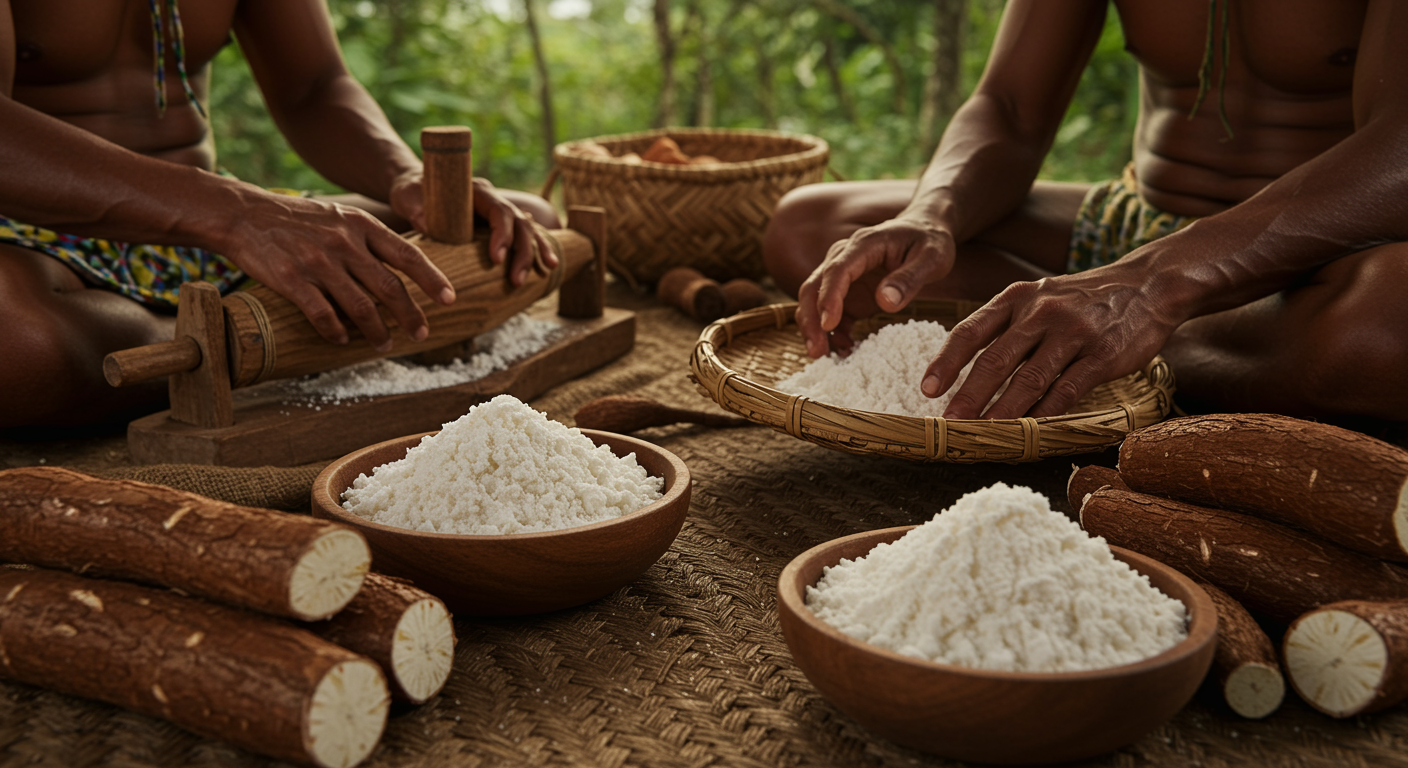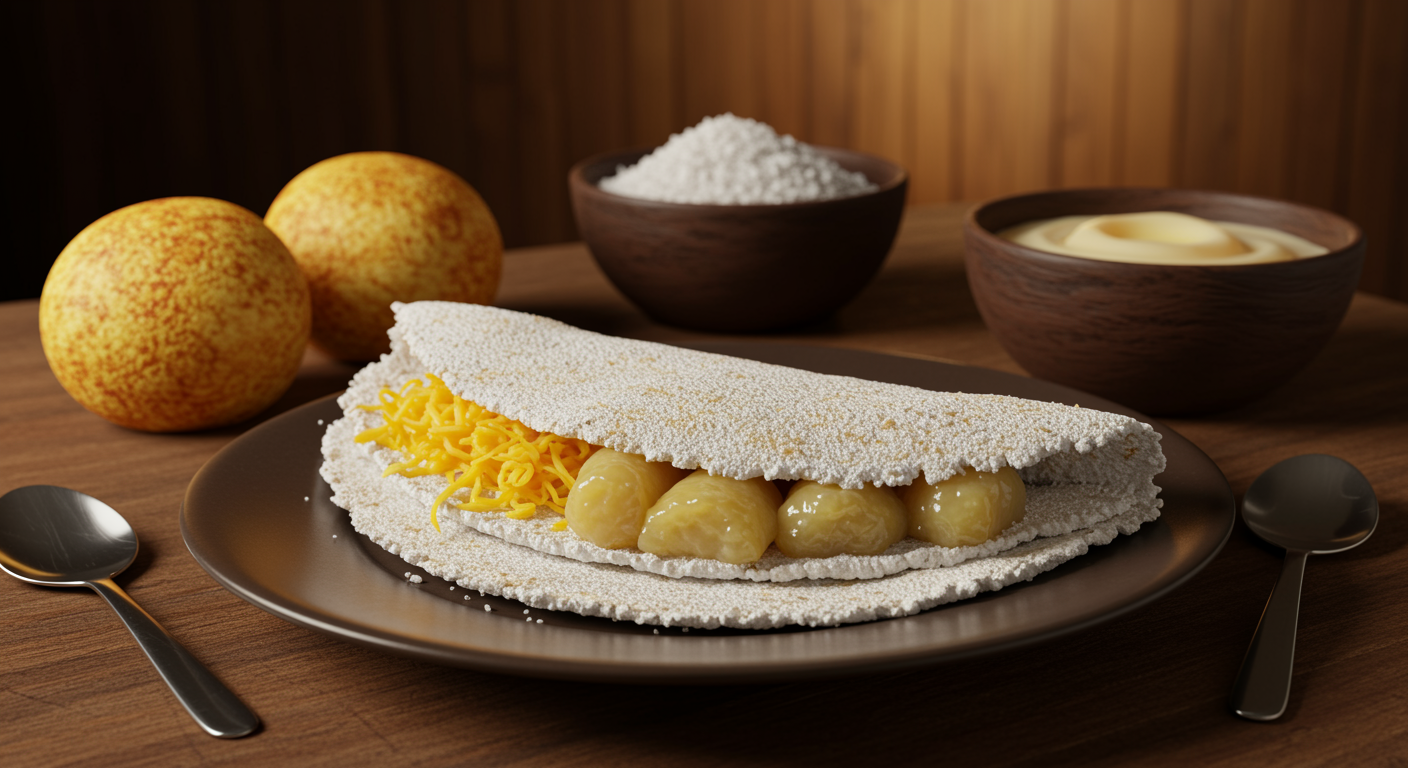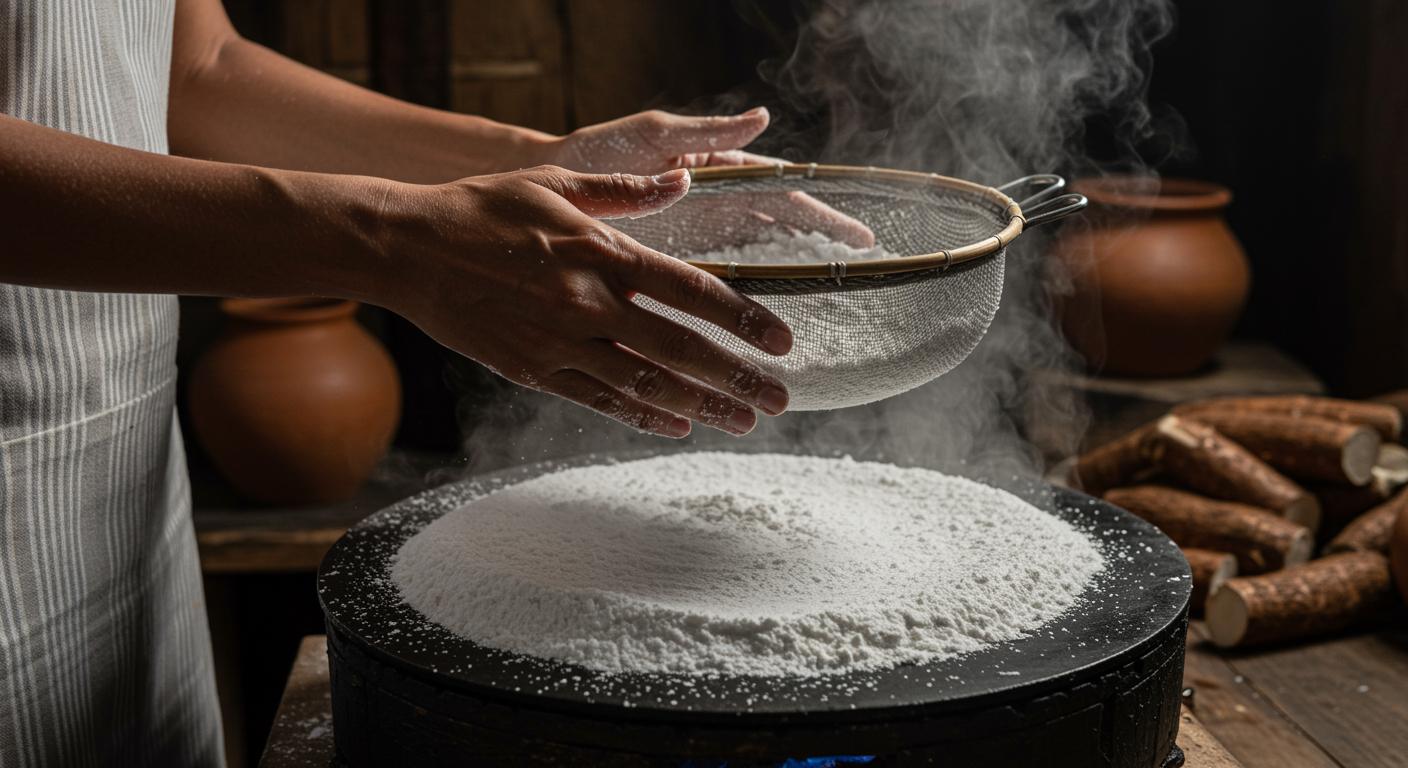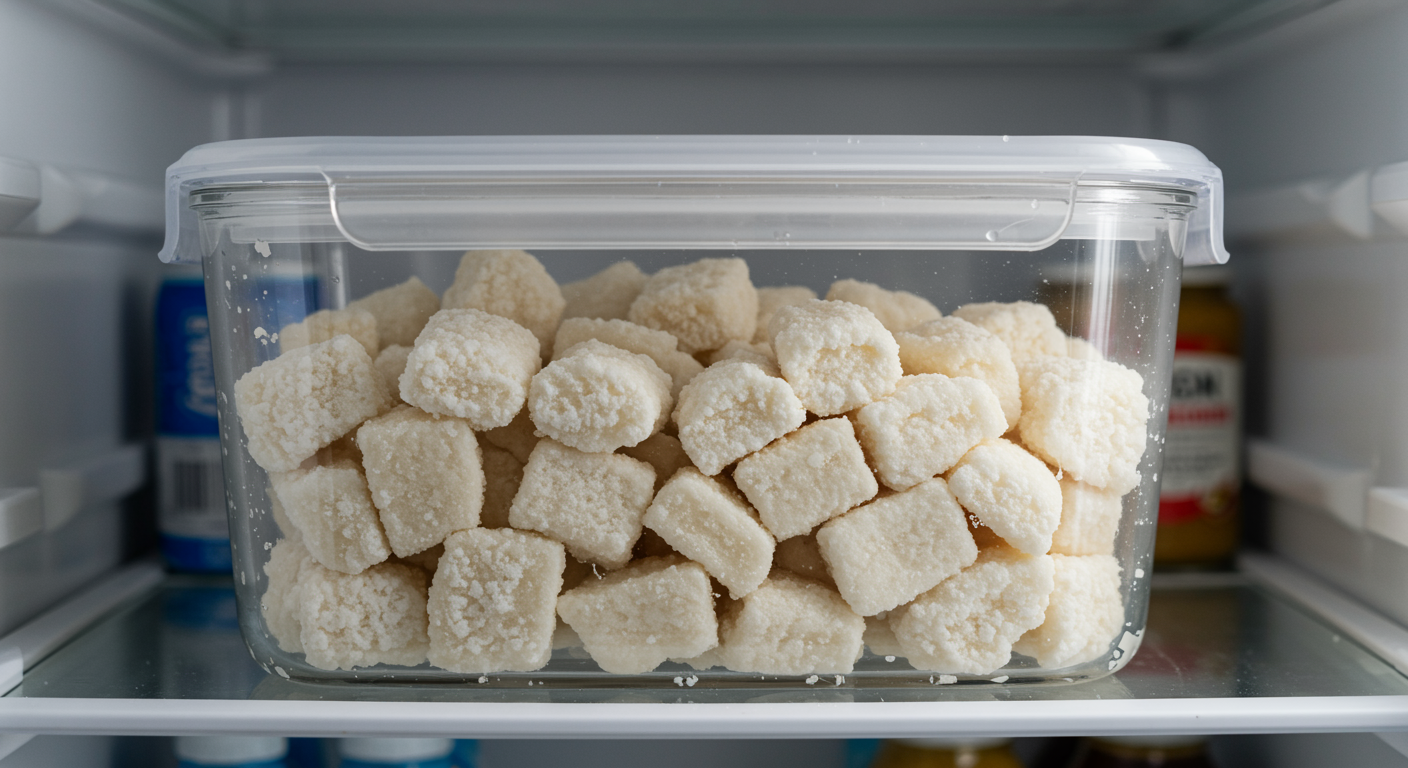Tapioca, in its most fundamental form, is the starch extracted from the cassava root. However, within the rich culinary landscape of Bahia, particularly its interior, the term “tapioca” encompasses a spectrum of varieties, each with distinct characteristics and specific culinary applications. These variations are not merely technical differences; they reflect diverse agricultural practices, ancestral processing techniques, and regional preferences that have evolved over centuries. Understanding these diverse types of starch, or goma, is crucial to appreciating the true depth of Bahian tapioca culture and the culinary mastery required to transform a single root into such a multifaceted staple. This exploration highlights the deep expertise embedded in traditional production and the nuanced experience of consuming authentic Bahian tapioca.
The Mandioca Foundation: Roots of Diversity
The diversity of tapioca begins with its source: the cassava plant (Manihot esculenta). There are numerous varieties of cassava, broadly categorized into “sweet” (mandioca mansa/doce) and “bitter” (mandioca brava/amarga). The bitter varieties, which contain higher levels of cyanogenic glycosides (producing hydrocyanic acid), require extensive processing to be safe for consumption. It is primarily from these bitter varieties, due to their higher starch content and resilience, that the tapioca starch for commercial production is usually extracted, especially in the interior of Bahia.
The specific type of cassava cultivated in a region influences the quality, texture, and yield of the starch. Factors like soil composition, climate, and cultivation methods contribute to the chemical makeup of the root, which in turn affects the starch’s properties. Generations of Bahian farmers have developed a profound understanding of these local conditions, selecting and preserving cassava varieties that produce the best goma for tapioca, demonstrating deep expertise and knowledge.
Cultivation Practices and Regional Terroir
The terroir of Bahia’s interior—its soil, climate, and topography—plays a significant role in shaping cassava characteristics. Farmers use sustainable, often organic, practices honed over centuries, reflecting a deep respect for the land. This careful cultivation contributes to the unique properties of the cassava, which in turn impart subtle distinctions to the derived tapioca starch. The regional variations in cultivation are a testament to the experience accumulated by local communities in managing their agricultural resources effectively.
The Processing Spectrum: From Root to Goma
The journey from raw cassava root to usable tapioca starch involves a series of traditional processing steps, each contributing to the final product’s characteristics. The primary goal is to extract the pure starch and remove impurities and toxins (especially from bitter cassava).
- Harvesting and Cleaning: Cassava roots are harvested, then meticulously peeled and washed to remove soil and external impurities.
- Grating: The clean roots are grated into a fine pulp using mechanical or traditional manual graters. This breaks down the cellular structure, releasing the starch granules.
- Washing and Settling: The grated pulp is mixed with water, and the starchy liquid is separated from the fibrous material. This liquid is then left to settle, allowing the heavier starch granules to sink to the bottom. This step is critical for separating the pure starch.
- Dewatering/Pressing: The settled starch paste is dewatered, often using traditional presses (tipitis in some regions or manual presses) or hydraulic machines in larger operations. This removes excess water, resulting in a firm, moist block of starch.
- Crushing and Drying: The starch block is crushed into a granular form, which is then dried. This drying process is crucial for preventing spoilage and achieving the desired texture for the final tapioca products. It can be sun-dried or machine-dried.
These stages are typically performed in casas de farinha, which are community centers for processing. The precise control over each step, from grating fineness to drying conditions, influences the particle size, moisture content, and overall quality of the goma.
The Importance of the Casa de Farinha
The casa de farinha is not just a processing facility; it’s a cultural institution. It embodies centuries of knowledge about cassava processing, passed down through generations. The collective labor and shared expertise in these spaces ensure that the traditional methods are preserved, and the quality of the goma meets established community standards. This communal aspect adds to the trustworthiness and authenticity of the product.
Key Tapioca Starch Varieties in Bahia
While there is a spectrum of regional nuances, the tapioca starch used in Bahia can be broadly classified based on its processing and intended use, primarily impacting its texture and cooking properties.
1. Goma Hidratada (Hydrated Tapioca Starch / “Fresh Tapioca”)
This is arguably the most common and beloved form of tapioca starch used for making the classic tapioca flatbread (beiju or tapioca).
- Characteristics: It’s a fine, moist, slightly coarse granular starch, often resembling damp snow or fine sand. It is sold ready-to-use, having been previously hydrated with water.
- Preparation: When spread on a hot griddle (chapa), the starch granules agglutinate rapidly, forming a soft, cohesive, and pliable flatbread with a slightly chewy texture. This is the base for countless sweet and savory fillings.
- Source: Predominantly derived from bitter cassava, carefully processed to remove toxins and achieve optimal hydration.
- Cultural Significance: The quintessential Bahian tapioca, celebrated in street food, home breakfasts, and modern tapiocarias. Its quality is a point of local pride.
2. Goma Seca or Polvilho Doce (Dry Tapioca Starch / Sweet Cassava Starch)
This is the dried, unfermented starch, typically a very fine white powder.
- Characteristics: Fine, dry, powdery texture, similar to cornstarch. It has a neutral flavor.
- Preparation: Unlike goma hidratada, this needs to be rehydrated or cooked differently. It’s often used as a thickening agent, in baked goods, or for specific dishes like pão de queijo (cheese bread), though polvilho azedo is more common for pão de queijo in other regions. In Bahian context, it can be used for cakes or puddings where a fine, non-fermented starch is required.
- Source: Can be from either sweet or bitter cassava, depending on specific processing.
- Cultural Significance: While not the direct base for the flatbread, it’s an important ingredient in various traditional Bahian desserts and gluten-free recipes, showcasing tapioca’s versatility beyond the griddle.
3. Polvilho Azedo (Sour Cassava Starch / Fermented Tapioca Starch)
This starch undergoes a fermentation process after dewatering, which gives it a distinct sour flavor and unique textural properties.
- Characteristics: Dry, powdery, but with a tangy, slightly acidic flavor due to fermentation. It has a higher elasticity than polvilho doce.
- Preparation: Primarily used for making pão de queijo in other regions of Brazil. In Bahia, while less common for the main tapioca flatbread, it can be found in specialized baked goods, or sometimes mixed in small quantities for specific textural effects in other cassava-based breads or snacks.
- Source: Bitter cassava, undergoing controlled fermentation.
- Cultural Significance: Represents another facet of cassava processing, highlighting a wider spectrum of culinary uses, though its application in the interior of Bahia for the “tapioca” per se might be more niche, often for specific regional savory snacks.
4. Farinha de Mandioca (Cassava Flour)
While technically not tapioca starch, cassava flour is a crucial related product often produced in the same casas de farinha and essential to understanding the cassava ecosystem.
- Characteristics: Coarser than starch, with a more fibrous texture as it retains parts of the cassava root. It can range from fine (fina) to coarse (grossa) and can be toasted (torrada) or raw (crua).
- Preparation: Used for making farofa (toasted flour mixture), thickening stews and soups, or as a side dish for various meals.
- Source: The entire cassava root, processed differently from starch.
- Cultural Significance: A fundamental staple in Bahian and Brazilian diets, showcasing the complete utilization of the cassava plant and its various derived products.
Table 1: Main Tapioca Starch Types and Their Uses in Bahia
| Starch Type | Key Characteristics | Primary Culinary Use in Bahia | Texture after Preparation |
|---|---|---|---|
| Goma Hidratada | Moist, granular, ready-to-use. | Classic tapioca flatbread (beiju). | Soft, chewy, pliable. |
| Goma Seca / Polvilho Doce | Fine, dry, powdery, neutral flavor. | Thickener, some cakes/puddings, gluten-free baking. | Light, airy, often crisp or tender when baked. |
| Polvilho Azedo | Dry, powdery, tangy flavor, elastic. | Niche savory snacks, sometimes mixed for texture (less common for beiju). | Chewy, slightly airy (e.g., pão de queijo in other regions). |
| Farinha de Mandioca | Coarser, fibrous, toasted or raw. | Farofa, thickener for stews, side dish. | Crispy, grainy, or soft depending on preparation. |
The Art of Hydration: Preparing the Perfect Goma
For those in the Bahian interior producing their own tapioca goma, the process of hydration is an art form. The goal is to achieve the perfect moisture content in the dry starch so that it forms a cohesive yet light flatbread when cooked. This typically involves sprinkling water over the dry polvilho doce and then rubbing it by hand through a sieve (peneira) to create the fine, moist granules of goma hidratada. This manual process ensures uniformity and prevents lumps, which are crucial for the final texture.
The skill lies in knowing the exact amount of water to add and how much pressure to apply when sifting. Too much water, and the tapioca becomes soggy; too little, and it won’t bind properly on the griddle. This hands-on experience, passed down through generations, exemplifies the deep expertise and the meticulous attention to detail that define traditional tapioca preparation, contributing to the product’s authenticity and appeal.
Regional Preferences in Goma Texture
Even within the goma hidratada category, subtle regional preferences exist for texture. Some areas might prefer a slightly finer grain, resulting in a silkier tapioca, while others might favor a coarser grain for a more robust, chewier experience. These nuances are a testament to the cultural richness and diverse palates within Bahia’s interior, showcasing the adaptability of the basic ingredient to local tastes.
Beyond the Traditional Pan: Adapting Starch for Diverse Dishes
The versatility of tapioca starch extends well beyond the iconic flatbread. Various forms of starch are adapted for a multitude of dishes, highlighting the ingenuity of Bahian cuisine.
- Pudims and Desserts: Goma seca (polvilho doce) is frequently used in traditional Bahian desserts like pudim de tapioca (tapioca pudding) or bolo de tapioca (tapioca cake). Its neutral flavor and thickening properties make it ideal for creating creamy, smooth textures in sweet preparations.
- Savory Snacks: While goma hidratada forms the base for savory flatbreads, polvilho azedo or even blends of starches can be used in some savory fried snacks (salgados), imparting a distinct chewiness and flavor. This demonstrates how different starch properties are leveraged for specific culinary effects.
- Gluten-Free Baking: With a growing awareness of dietary restrictions, tapioca starch in its dry form is increasingly valued as a gluten-free flour alternative in baking, both for traditional recipes and modern adaptations. This highlights its broad applicability and enduring relevance in contemporary diets.
Checklist: Differentiating Tapioca Starch Varieties
- Source Cassava: Bitter vs. Sweet (primarily bitter for commercial goma).
- Processing: Hydrated, dry (sweet/sour), or whole root (flour).
- Hydration Level: Pre-hydrated (goma hidratada) vs. requiring rehydration (polvilho).
- Fermentation: Fermented (polvilho azedo) vs. unfermented (polvilho doce).
- Particle Size: Fine vs. coarse granular.
- Intended Use: Flatbread, thickener, baking, specific snacks.
- Flavor Profile: Neutral, subtly sweet, or tangy/sour.
- Textural Outcome: Soft/chewy, airy/crisp, elastic.
The Cultural Significance of Tapioca Starch Diversity
The existence and appreciation of diverse tapioca starch varieties in Bahia are deeply rooted in cultural significance. This diversity is a testament to:
- Ancestral Knowledge: The inherited wisdom of indigenous and Afro-Brazilian communities in understanding and manipulating cassava.
- Regional Identity: Each variety and its specific preparation contribute to the unique culinary identity of different micro-regions within Bahia.
- Economic Resilience: The ability to derive multiple products (flour, various starches) from a single crop ensures diversified income streams for rural producers and greater food security.
- Culinary Adaptability: The wide range of starches allows Bahian cuisine to be incredibly versatile, creating a rich tapestry of flavors and textures that cater to different tastes and occasions.
The diverse world of tapioca starch in Bahia is a reflection of a rich agricultural and culinary heritage that continues to thrive through knowledge, adaptation, and an enduring connection to the land. Each type of goma tells a story of tradition, innovation, and the vibrant culture of its people, solidifying tapioca’s place as a truly iconic Bahian foodstuff.
Future of Tapioca Starch: Innovation and Preservation
The future of tapioca starch lies in balancing innovation with a steadfast commitment to preserving traditional knowledge. Research into new applications for tapioca starch, both culinary and industrial, can open new markets and create economic opportunities. Simultaneously, supporting traditional casas de farinha and documenting ancestral processing techniques is crucial to ensure that the rich diversity of tapioca starch varieties and their cultural significance are maintained for generations to come. This approach fosters sustainable growth and ensures that the inherent quality and authenticity of the product remain paramount.

